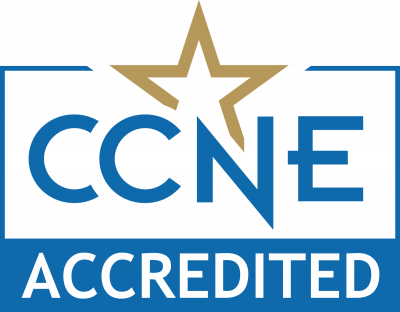
Many people know of the natural partnership that exists between UConn School of Nursing and UConn Health. Most are probably not aware, however, of the decade-long collaboration forged between the School and Connecticut Children’s.
As early as 2008, nursing faculty who were conducting research into health issues concerning children and infants were reaching out to physicians at the children’s hospital to recruit study participants. The partnership at that time was informal, with faculty directly contacting nurses and doctors they thought would be interested in collaborating.
Nurse researcher Jacqueline McGrath, Ph.D., RN, FNAP, FAAN, was hired to a dual appointment in 2012 as professor in the School of Nursing and director of nursing research at Connecticut Children’s, creating a more official link between the two institutions. In fact, part of McGrath’s responsibilities was to increase and promote collaboration. In 2018, Connecticut Children’s hired nurse scientist Katherine A. Hinderer, Ph.D., RN, CNE, NEA-BC, to lead its nursing research, a position she still holds today. Hinderer and former School of Nursing faculty member Xiaomei Cong, Ph.D., RN, FAAN, helped usher in the next phase of the partnership.
“We as an organization committed to supporting nursing excellence and part of that was growing our nursing research and evidence-based practice,” Hinderer says. “Jackie McGrath and former chief nursing officer Cheryl Hoey, MBA, BSN, RN, at Connecticut Children’s built the Institute for Nursing Research and Evidence-Based Practice. This established an infrastructure for nursing research at Children’s and developed a stronger mechanism for nurse scientist faculty from UConn to work with teams at Children’s.”
In addition to the Institute for Nursing Research and Evidence-Based Practice, the Research Institute at Connecticut Children’s, launched in 2021, provides additional collaborative opportunities and support to advance nursing science.
Cong and School of Nursing assistant professor Sharon Casavant ’15 (NUR), ’18 MS, ’19 Ph.D. were two of the first to conduct studies at Connecticut Children’s that were funded by the National Institutes of Health. Cong’s study, which began in 2009, focused on how kangaroo care—a method of holding newborns—can alleviate some of the pain and stress neonates experience after certain procedures. Casavant conducted her research during her postdoctoral fellowship at UConn, focusing on the effects those same painful procedures have on preterm infants at the genetic level.
She is just one of several UConn School of Nursing alumni who continued to have a research relationship with Connecticut Children’s after graduation. Carrie-Ellen Briere ’14 Ph.D., RN, CLC, who remained at UConn until 2017 for her postdoctoral work, was also a nurse scientist at Connecticut Children’s until 2017, when she began an academic appointment at University of Massachusetts Amherst. Briere rejoined Children’s in 2022 as a per-diem nurse scientist while maintaining her UMass appointment.
In the past two years, UConn School of Nursing has hired several new faculty members who specialize in pediatric research: Eileen Carter, Ph.D., RN, in 2020; Casavant, Katherine Bernier Carney ’18 MS, ’19 Ph.D., RN, Eileen Condon, Ph.D., APRN, FNP-BC, and Christina Ross, Ph.D., RN, in 2021; and Mallory Perry-Eaddy ’14 (NUR), ’17 MS, ’19 Ph.D. in August. Hinderer says she appreciates having other nursing research experts to connect with and help grow their program at Connecticut Children’s.
“I am looking forward to this next generation of nurse scientists who are joining the School of Nursing that we can partner and collaborate with,” she says. “This gives us the opportunity to benefit from their expertise and knowledge, allowing our clinical nurses to participate in these high-quality nursing studies and think about the contribution
nursing can make to science.”
UConn School of Nursing has built a strong roster of researchers specializing in maternal and child health over the years and Cong says it has helped recruit new faculty. Several of the newest faculty members presented their research to staff at Connecticut Children’s during a virtual nursing grand rounds in May: “Promoting Health Equity and Health Outcomes for Children and Families through Multidisciplinary Approach.”
Condon’s research focuses on how caregivers’ adverse childhood experiences and protective factors are passed down through generations with the hope of improving health outcomes for caregivers and children. She shared information about her latest study, which seeks to understand the connections between stress, sleep, and child health and behavior. Casavant showcased her research into the length of telomeres—end caps on chromosomes—in preterm infants and if there is a correlation to the stress the infants inherit from their parents.
Ross’ program of research promotes sexual reproductive health and sexual self-efficacy among female African American adolescents who live in foster care. Her future research will help develop a mobile app geared toward those adolescents. She told the audience at the grand rounds that the app will be culturally sensitive and trauma-informed and will feature information, games, and other activities related to sexual health, so the adolescents feel empowered to address their needs. Carter shared information about how innovative partnerships can advance the profession of nursing and improve patient care. Her current research focuses on how unconfirmed penicillin allergies in children can lead to greater resistance to other antibiotics.
Hinderer says several clinical nurses at Connecticut Children’s have expressed interest in getting involved in research since the grand rounds presentation. She hopes the continued exposure to research, whether UConn’s or other institutions’, will inspire nurses to earn advanced degrees and become researchers themselves. Bernier Carney and Perry-Eaddy were clinical nurses at Connecticut Children’s when they completed their doctorates and Hinderer hopes more will follow in their footsteps.
“We know there are many opportunities for growth in pediatric research and a need to advance the science. The vast majority of research conducted focuses on adults, and this work does not just translate to kids,” Hinderer says. “To have the opportunity for these expert faculty who are pediatric nurse researchers to partner with us and conduct their research at Connecticut Children’s is phenomenal.”
Both sides hope the partnership will continue to grow as more faculty join the UConn School of Nursing. Cong says when she is interviewing potential faculty members, they always ask about the research environment and what collaborations are available.
“My vision is that five years from now we will have an increasingly robust program of nursing research that really highlights the contributions that nurses make to science,” Hinderer says.
In the end, the stronger the partnership and collaboration the better care will be for Connecticut Children’s patients
and families and potentially other pediatric patients across the country.
“The ultimate goal of all this research is to produce the best clinical outcomes for children and children’s health care,” says Sarah Matney, MSOL, BSN, RN, CENP, CPON, who is the chief nursing officer and senior vice president of clinical operations at Connecticut Children’s.
She notes that the partnership goes beyond research faculty and graduate students, but also involves UConn School of Nursing undergraduate students, who complete clinical hours or capstone projects at the hospital.
“As student nurses complete clinical hours here, we begin to build the hunger for that commitment to improving care early in their careers,” Matney says. “It has an overflow effect directly to patients and families and the future of nursing in general.”
This article was originally published in the Fall 2022 issue of Unison.

